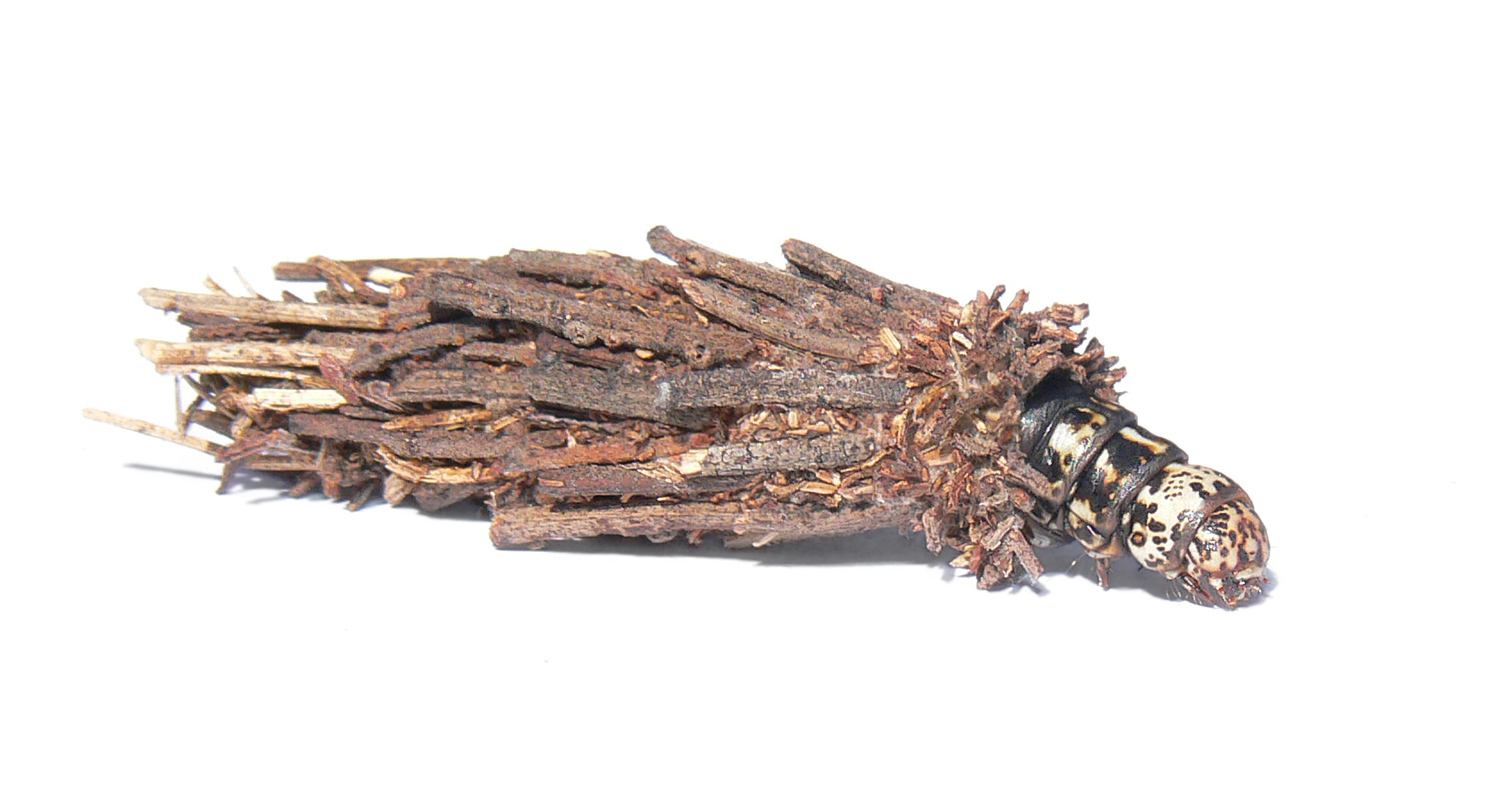Spontaneous Generation: fire animals, animals that look like twigs, and mosquitos
“There is a fact common to animals and plants. Some plants come to be from seed, while others come to be spontaneously, when some seed-like principle is formed; and of these, some grow in (lit. ‘get their nourishment from’) the ground, while others emerge inside other plants, as we said in our exposition on plants. In the same way, some animals come to be from animals in accordance with a shared kind of form, while others come to be spontaneously and not from something of the same kind; of these, some come from decaying earth and plants, as happens with many of the insects, while others come to be inside of animals from the residues in their internal organs.”
Κοινὸν μὲν οὖν συμβέβηκε καὶ ἐπὶ τῶν ζῴων, ὥσπερ καὶ ἐπὶ τῶν φυτῶν· τὰ μὲν γὰρ ἀπὸ σπέρματος ἑτέρων φυτῶν, τὰ δ' αὐτόματα γίνεται, συστάσης τινὸς τοιαύτης ἀρχῆς, καὶ τούτων τὰ μὲν ἐκ τῆς γῆς λαμβάνει τὴν τροφήν, τὰ δ' ἐν ἑτέροις ἐγγίνεται φυτοῖς, ὥσπερ εἴρηται ἐν τῇ θεωρίᾳ τῇ περὶ φυτῶν. Οὕτω καὶ τῶν ζῴων τὰ μὲν ἀπὸ ζῴων γίνεται κατὰ συγγένειαν τῆς μορφῆς, τὰ δ' αὐτόματα καὶ οὐκ ἀπὸ συγγενῶν, καὶ τούτων τὰ μὲν ἐκ γῆς σηπομένης καὶ φυτῶν, ὥσπερ πολλὰ συμβαίνει τῶν ἐντόμων, τὰ δ' ἐν τοῖς ζῴοις αὐτοῖς ἐκ τῶν τοῖς μορίοις περιττωμάτων.
Aristotle, History of Animals 5.1, 539a15-539a25
“At first, the decaying slime itself takes on a white color, then black, and finally blood-red. When this happens, things grow from it that are like very tiny, red wisps of seaweed. At this point in time, they wiggle as they cling to things, then, the ’ascarides’ (as they are called) break loose and swim around in the water. After a few days, they stand straight in the water, motionless and rigid, and then, when the shell breaks off, the mosquito sits on it, until the sun or pneuma causes it to move. Then they fly away. For all the rest of the grubs, too, and all the animals that emerge from grubs, the principle of generation comes to be from the sun or the pneuma.”
Τὸ μὲν οὖν πρῶτον αὐτὴ ἡ ἰλὺς σηπομένη χρῶμα λαμβάνει λευκόν, εἶτα μέλαν, τελευτῶσα δ' αἱματῶδες· ὅταν δὲ τοιαύτη γένηται, φύεται ἐξ αὐτῆς ὥσπερ τὰ φυκία μικρὰ σφόδρα καὶ ἐρυθρά· ταῦτα δὲ χρόνον μέν τινα κινεῖται προσπεφυκότα, ἔπειτ' ἀπορραγέντα φέρεται κατὰ τὸ ὕδωρ, αἱ καλούμεναι ἀσκαρίδες. Μεθ' ἡμέρας δ' ὀλίγας ἵστανται ὀρθαὶ ἐπὶ τοῦ ὕδατος ἀκινητίζουσαι καὶ σκληραί, κἄπειτα περιρραγέντος τοῦ κελύφους ἡ ἐμπὶς ἄνω ἐπικάθηται, ἕως ἂν ἥλιος ἢ πνεῦμα κινήσῃ· τότε δ' ἤδη πέτεται. Πᾶσι δὲ καὶ τοῖς ἄλλοις σκώληξι καὶ τοῖς ζῴοις τοῖς ἐκ τῶν σκωλήκων περιρρηγνυμένοις ἡ ἀρχὴ γίνεται τῆς γενέσεως ὑφ' ἡλίου ἢ ὑπὸ πνεύματος.
Aristotle, History of Animals 5.32, 551b29-552a11
“In Cyprus, in places where copper-ore is smelted, with heaps of the ore piled on day after day, an animal is engendered in the fire, somewhat larger than a large fly, furnished with wings, which can hop or crawl through the fire.”
Ἐν δὲ Κύπρῳ, οὗ ἡ χαλκῖτις λίθος καίεται, ἐπὶ πολλὰς ἡμέρας ἐμβαλλόντων, ἐνταῦθα γίνεται θηρία ἐν τῷ πυρί, τῶν μεγάλων μυιῶν μικρόν τι μείζονα, ὑπόπτερα, ἃ διὰ τοῦ πυρὸς πηδᾷ καὶ βαδίζει.
Aristotle, History of Animals 5.19, 552b10-13
“There is a kind of grub, which is called ‘twig-bearer,’ stranger than any animal. Its head projects outside its shell, mottled in colour, and its feet are near the end, as is the case with other grubs, but the rest of its body is encased in a tunic of something like a spider’s web. Around it are tiny dry twigs that seem to have stuck to it as it walked about, but they are fused together with the tunic. Like the shell is to the snail, so is the whole formation to this grub. And it does not fall off, but can be torn off, like natural appendages. And if someone removes the tunic, it dies and becomes as helpless as a snail whose shell was removed. In time, this grub becomes a chrysalis, just like a caterpillar, and then it lives without moving. The winged animal which comes to be from it has not yet been observed.”
Ἔστι δέ τι σκωλήκιον ὃ καλεῖται ξυλοφθόρον, οὐδενὸς ἧττον ἄτοπον τῶν ζῴων. Ἡ μὲν γὰρ κεφαλὴ ἔξω τοῦ κελύφους προέρχεται ποικίλη, καὶ οἱ πόδες ἐπ' ἄκρου, ὥσπερ τοῖς ἄλλοις σκώληξιν, ἐν χιτῶνι δὲ τὸ ἄλλο σῶμα ἀραχνιώδει, καὶ περὶ αὐτὸ κάρφη, ὥστε δοκεῖν προσέχεσθαι βαδίζοντι· ταῦτα δὲ σύμφυτα τῷ χιτῶνί ἐστιν· ὥσπερ κοχλίᾳ τὸ ὄστρακον, οὕτω τὸ ἅπαν τῷ σκώληκι, καὶ οὐκ ἀποπίπτει ἀλλ' ἀποσπᾶται ὥσπερ προσπεφυκότα· καὶ ἐάν τις τὸν χιτῶνα περιέλῃ, ἀποθνήσκει καὶ γίνεται ὁμοίως ἀχρεῖος ὥσπερ ὁ κοχλίας περιαιρεθέντος τοῦ ὀστράκου. Χρόνου δὲ προϊόντος γίνεται καὶ οὗτος ὁ σκώληξ χρυσαλλὶς ὥσπερ αἱ κάμπαι, καὶ ζῇ ἀκινητίζων· ὅ τι δ' ἐξ αὐτοῦ γίνεται τῶν πτερωτῶν ζῴων, οὔπω συνῶπται.
Aristotle, History of Animals 5.32, 557b12-25

